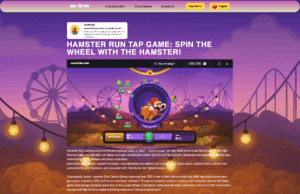Crafting Compelling Stories Through Visual Expression

In a world increasingly dominated by digital content, standing out is no longer just about having a message—it’s about how that message is delivered. Visual storytelling has taken center stage, becoming the most dynamic way to connect with audiences.
It goes beyond surface aesthetics, tapping into emotion, rhythm, and narrative to deliver lasting impressions. Whether for social media, internal communications, or product showcases, video is the medium that captures attention fast and holds it long. The demand for originality, fluid pacing, and story-driven visuals is reshaping how brands and individuals communicate. Viewers expect authenticity, not just polish. And they crave content that feels purposeful rather than generic. Read on to explore the key elements that elevate production quality and drive viewer engagement from concept to screen.
Story First, Always
Every great video begins with a solid story. Before cameras roll or scripts are finalized, the core message must be clear. Whether it’s a brand film, explainer, or testimonial, narrative clarity serves as the foundation for everything else.
Effective storytelling in a visual format often relies on emotional arcs and identifiable characters or themes. It’s about creating something the viewer can relate to, even if they’ve never interacted with the product, brand, or individual before. From the opening scene to the final frame, the goal is consistency in tone and intention.
Sometimes the story is literal—like a behind-the-scenes feature or founder origin piece. Other times, it’s metaphorical, using visual cues and music to convey values or atmosphere. Either way, a cohesive story ensures every element contributes to the bigger picture.
A compelling narrative doesn’t have to be dramatic or complex. Simplicity with heart can be just as powerful as intricate plotlines, especially when executed with clarity and care.
When a story resonates, the video feels less like content and more like a moment—and that’s what gets remembered.
Planning for Flexibility and Precision
Pre-production is where vision meets structure. It’s the phase that transforms creative intent into an actionable plan, covering everything from shot lists to location logistics. The more detailed the preparation, the smoother the production process—and the more room there is for spontaneous inspiration.
This stage is also where teams align on tone, pacing, audience, and visual style. Mood boards, scripts, and storyboards aren’t just tools—they’re blueprints that ensure everyone’s working toward the same outcome.
Having a detailed plan doesn’t mean being rigid. It simply provides a clear structure that allows flexibility within boundaries. Unexpected weather, changed timelines, or last-minute creative sparks can be handled smoothly when there’s a foundational roadmap in place.
Planning also reduces time on set, helps manage budgets, and ensures post-production runs efficiently. In a creative field where time equals resources, precision during pre-production pays off in the final product.
An efficient pre-production workflow can also help avoid common pitfalls, such as scheduling conflicts or missing essential shots, saving teams from expensive delays or disappointing results.
Crafting Visuals That Speak Without Words
Strong visuals don’t rely solely on narration or dialogue to carry the message. Lighting, color palettes, composition, and camera movement all play a role in shaping how a viewer feels while watching.
For example, a slow dolly shot might convey elegance or suspense. A tight handheld frame could evoke intimacy or urgency. These choices aren’t random—they’re part of an intentional visual language that supports the story being told.
Color grading further enhances mood, making the difference between something that looks amateur and something that feels cinematic. Even texture—like grain, blur, or sharpness can reinforce themes of nostalgia, clarity, or drama.
Music and sound design enhance these visuals by setting the tone and pace. The sound of footsteps, the swell of a score, or the contrast of silence can guide the emotional flow of a scene just as powerfully as imagery.
When visuals and audio are aligned, the result is immersive. The audience doesn’t just watch—they experience the story unfolding.
In projects with minimal dialogue or narration, the power of visual storytelling becomes even more crucial, requiring extra attention to the nuances of timing, rhythm, and space between scenes.
Collaboration as a Creative Engine
Great production doesn’t happen in a vacuum. It’s the result of creative collaboration between directors, editors, producers, stylists, camera operators, and often clients or talent. Each person brings a perspective that sharpens and expands the original idea.
This collaboration starts early, with shared input during concept development and storyboarding. It continues through production, where improvisation and group problem-solving often lead to the best moments. And it peaks in post-production, where editing becomes an art form in its own right.
Communication is the key to strong collaboration. Creative teams that thrive are those that know how to share feedback constructively, adjust plans with agility, and align personal artistic goals with shared outcomes.
Working together creatively doesn’t mean sacrificing vision—it means refining it through multiple lenses until the best possible version emerges. When everyone on a set feels valued and heard, the final product reflects that synergy.
Mutual trust between collaborators encourages risk-taking, experimentation, and creative freedom—all of which can lead to surprising and exceptional results.
Adapting Content for Multiple Channels
Once the primary version of a video is complete, the journey doesn’t end—it evolves. Modern content strategies often require a single production to yield multiple versions optimized for different platforms, audiences, and formats.
A full-length feature might be trimmed into a 30-second teaser, a vertical story, or a text-heavy version for silent autoplay. The content should feel native, whether it’s being viewed on a smartphone, laptop, or embedded in a landing page.
Adapting across platforms also means understanding audience behavior. What performs well on TikTok might not suit LinkedIn. A tutorial-style breakdown may work great on YouTube, but it needs heavy captioning on Instagram.
Flexibility in the editing suite allows producers to future-proof their work. With minimal adjustments, a single shoot can yield an entire campaign, saving time and amplifying reach.
The most effective content teams think ahead during pre-production, designing assets that are easy to repackage or update. That foresight turns a single session into a scalable asset with long-term value.
One project that exemplifies this approach is creative video production, where visual strategy, technical execution, and platform adaptation are combined to deliver versatile storytelling across digital spaces.




